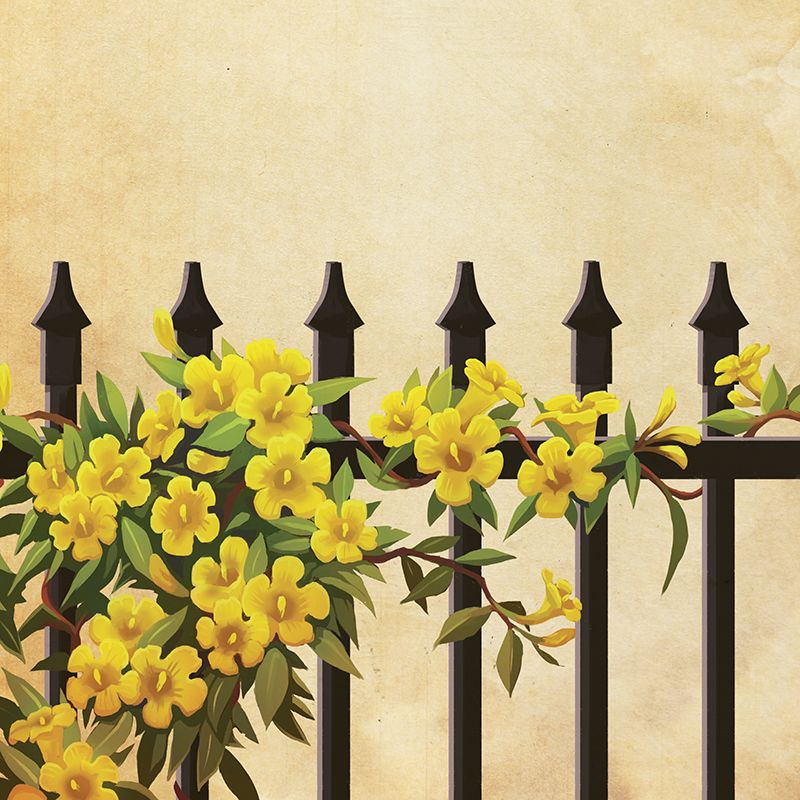Each spring, the bright yellow flowers of Carolina jessamine (Gelsemium sempervirens) announce the new season in fragrant clusters that cascade from forest trees, brighten fences, and glorify suburban lampposts and mailboxes. Easy to grow, this evergreen vine thrives as well in a town garden as it does in the Lowcountry woods

Trumpeting Spring Carolina jessamine begins putting out prolific clusters of trumpet-shaped blooms as early as February. Their heady aroma attracts a number of pollinators, from bees to butterflies. It’s tricky to produce synthetically, so the perfume industry puts the plant’s essential oils to work in its sweet-smelling potions.
Healing History Native Americans once employed the leaves and roots in medicinal curatives they used to treat various illnesses and ease pain.
Trellis Perfection The plant’s lightweight vines are easily trained up trellises, arbors, and other garden supports. Reaching 20 feet in length, the tendrils can artistically cover a structure in only a few years, or can climb along as an erosion-controlling ground cover.
Proceed with Caution Even ever-hungry deer leave this vine alone because the roots, leaves, and flowers are highly poisonous. The sap alone can irritate humans with sensitive skin.
Know to Grow Plant jessamine in rich, well-draining soil. It’ll do fine in partial shade, but full sun boosts blooms. Be sure to feed it during the growing season with a slow-release, balanced fertilizer such as 12-6-6.
Nothing Could Be Finer In 1712, the English explorer and botanist Mark Catesby visited the Lowcountry and named the species “yellow jessamy.” Described by the South Carolina General Assembly as being “indigenous to every nook and corner of the State,” it took on the role of our official state flower in 1924.